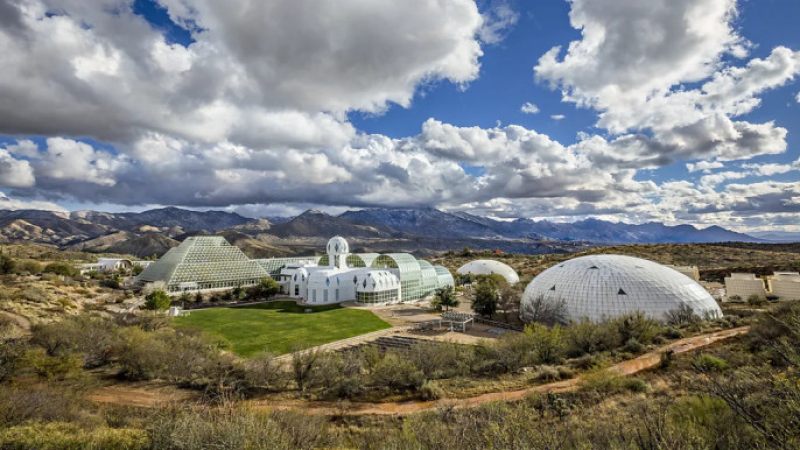- Election delay anti-democratic, against July-August spirit |
- Bodies of 3 students recovered from two rivers in Rangpur |
- BRICS Summit Opens Amid Tensions, Trump Tariff Fears |
- Musk Launches 'America Party' in Fresh Split with Trump |
- Israel to send negotiators to Gaza talks |
Biosphere 2 Shows Earth’s Fragility in a Glass-Covered Lab

The Biosphere 2, a 1.2-hectare "mini Earth" housing a rainforest, ocean, desert, savannah, mangrove, and agricultural land — all under glass.
Amid Arizona’s desert landscape lies a glass-encased world once viewed as an eccentric experiment but now seen as one of the most valuable ecological research labs on the planet.
Biosphere 2 — a 1.2-hectare replica of Earth’s ecosystems — houses a rainforest, ocean, desert, savannah, mangrove, and farmland under a giant dome. Initially launched in 1991 to explore human survival in a closed environment, it has since become a critical scientific tool for understanding climate change and ecological resilience.
The original mission, which involved eight people living in the sealed dome for two years, faced severe challenges: plummeting oxygen, rising carbon dioxide, crop shortfalls, and vanishing pollinators. Critics labelled it a failure, but scientists now say these issues revealed just how delicate Earth’s systems really are.
"It wasn't a failure. It was ahead of its time," said Lisa Rand, a science historian at Caltech.
Funded by billionaire Ed Bass, the structure was designed as a self-sustaining "biospheric package" — essentially a prototype for possible Moon or Mars habitats. But it quickly showed the enormous complexity of duplicating Earth's life-supporting functions.
As the oxygen levels fell to high-altitude equivalents and crops underperformed, the so-called “biospherians” endured calorie-restricted diets. The ecosystem teetered on collapse, but the experience offered valuable insights.
Now managed by the University of Arizona, Biosphere 2 is used to simulate future environmental scenarios: from acidifying oceans and drought-stricken forests to potential coral adaptation techniques.
Marine geoscientist Diane Thompson noted the facility helps test solutions that might work not only today but decades into the future. Recent rainforest chamber studies revealed how some trees survive by accessing deep soil water, while others release aerosols that may trigger rainfall.
Inside the miniature ocean, researchers are experimenting with "stress hardening" coral to boost their resilience against warming seas.
Yet the most profound takeaway remains simple: Earth is irreplaceable.
Attempts to reproduce even basic environmental functions inside Biosphere 2 required vast resources — and still didn’t fully succeed. Replicating these systems at scale could cost tens of thousands of dollars per person each month, without a guarantee of sustainability.
As private spaceflight companies entertain visions of life on Mars, scientists caution against assuming such a future is viable. “We're all biospherians,” said Mark Nelson, one of the original participants. “And we only have one biosphere that actually works — Earth.”

